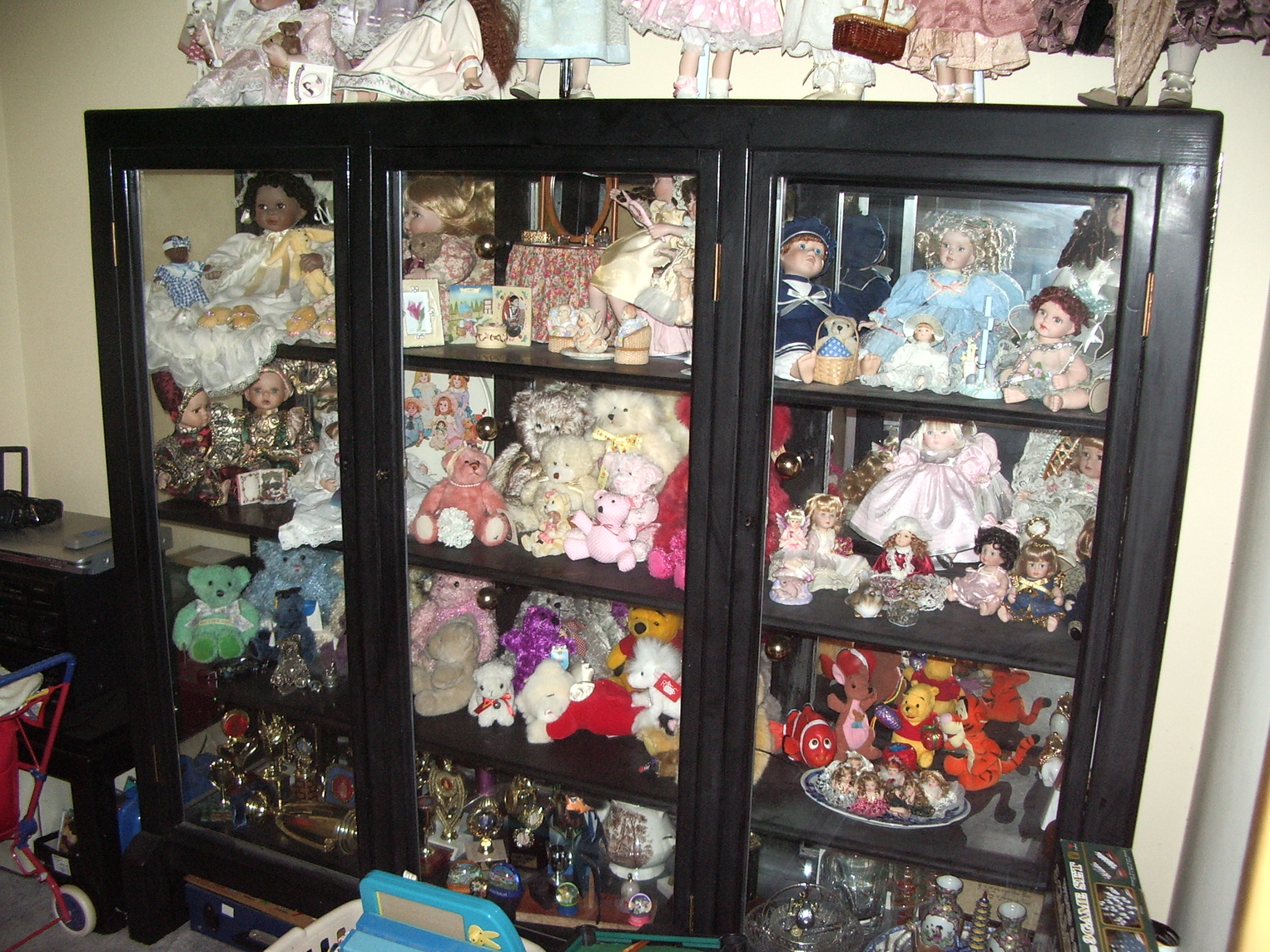The
China Cabinet
designed and constructed by the author circa 1991
a project that
became a monster
designed and biult by Ralph Klimek over a three year span
now contains some lost souls
This China Cabinet began life as a simple request of she who must be
obeyed.
She merely wanted a small, modest cabinet in which to display
her brac-a-brac. As for me, being a little inexperienced in the
art of fine display furniture immediately overestimated its size and
the fact that cost scales exponentially with size. Coupled with
my (at this stage in life) desire to please her every whim. I also
grossly underestimated the construction time given my lowly skill level
and that I was not a full time cabinet maker !
I set about with a will. The project dragged on for just over two
years, I was fed up with it and the boss was getting cross. I
finally finished it to the point of enamelling it, then came the ugly
part. Parting will all that money to buy the glass and mirrors . I
had no idea that glass and mirror could be so costly. Despite
numerous setbacks, including a mid project change of specification, it
was completed and looks quite good, excellent in fact.....from a
distance. By and large the project was a success despite my lack of
skill and the boss's discouragement. I do not advise anybody to
replicate it, it will break your heart and bleed your budget.
This was constructed with the aid of a Triton Work Centre, I could not have made the precision wood cuts any other way.
In a dark room with its built in lamps illuminated, the effect is stunning...at least that early vision of mine came good.
The construction method is un-orthodox. First a frame was
constructed with corner joints nicely morticed and interlocked. The
frame material is heavy oregon square beams. The top is high density
chipboard placed in a rebate on the top frame, as it the very bottom
shelf. The shelves are dowelled parallel pine boards and rest in
mortices in the frame. The interior is very uncluttered and spacious as
a result. The back board , a large heavy plywood sheet, sits in
its own rebate in the frame. Glass is sitting in its own rebate and
loosely held down ( to relieve stress) with handmade beading. The three
sheets of mirror also sit in their own rebates, loosely held in place
by the back board.
The unit as constructed is immensly heavy. There are permanent
handles at the back to facilitate moving it. I now wish that I had
incorporated heavy duty castors into the design of the feet, it would
have made construction and transport so much easier.
The oregon
material has proven to be very stable. It is easy to cut, plane and
polish. It is easily shaped with a router. It is quite stable with
respect to humidity changes. I wonder why this timber is considered "
not suitable" for furniture ? Given its near immunity to vermin attack.
Mirrors are a very effective way of improving the visual appeal of any size cabinet....and they cannot be painted beige!
Electric lights are fitted, using reflector globes pointing backwards,
to remediate direct glare. Paint was (at the time) very costly British
Paints Black Enamel , when this was still a genuinely good brand.
The doors and made with interlocking morticed corners secured with a
hidden steel bolt to resist the turning moment induced by the large
mass of the doors. The glass sits in its own rebate and secured in place with aluminum strip.
At the time the frame corner joints were true and perfect, the gaps
being nicely filled and enamelled. As the years have progressed and
wood reacts to the changing humidity, the slight movement has resulted
in the joins becoming visible. If there is a next time, I would hide
the joins with a decorative cut line done with a router, so that the
joints become a feature disguising the joins.
There is a front foot, offsetting any tendancy to fall forward , as
this unit is extremely heavy. The major cost of this project was
dominated by the cost of the glass and mirrors and my time. Even though
it should be considered a success, I shall not attempt anything
this ambitious again. Life is too short; affection too fickle.
| detail images from the china cabinet project |
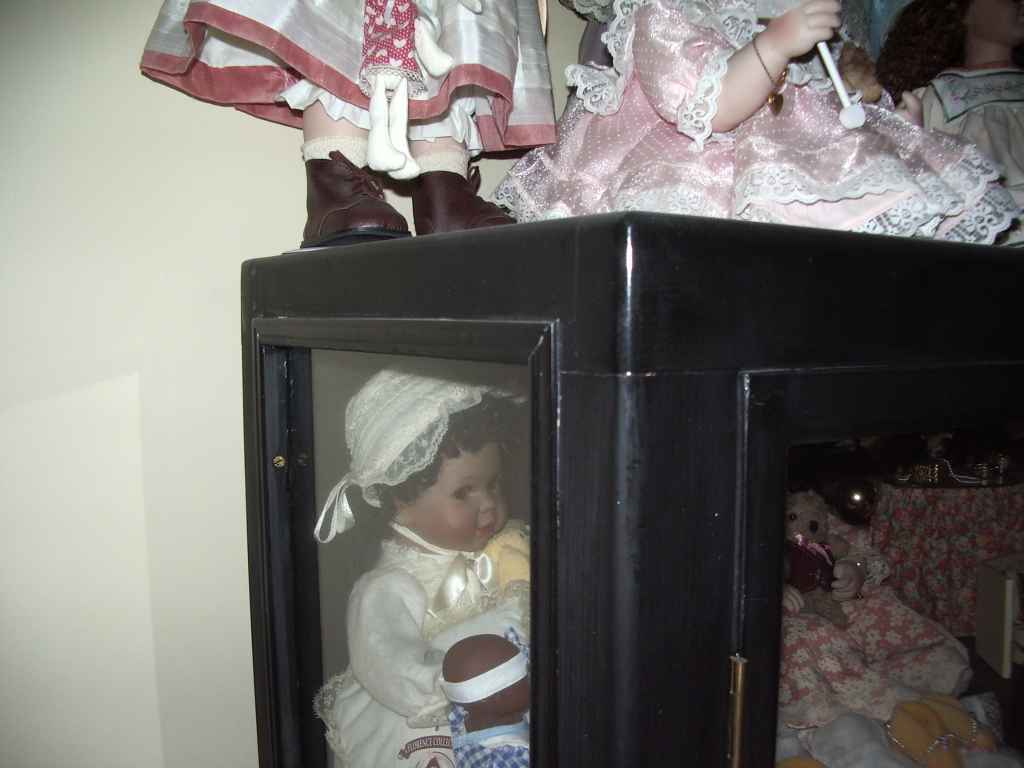 | 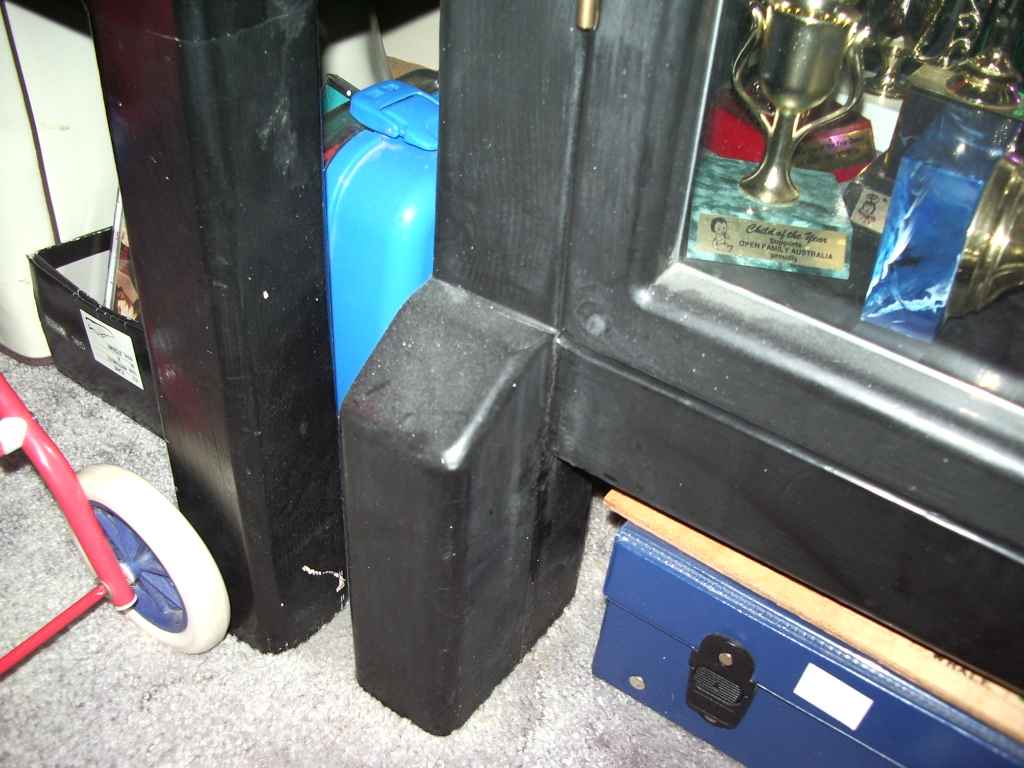 | 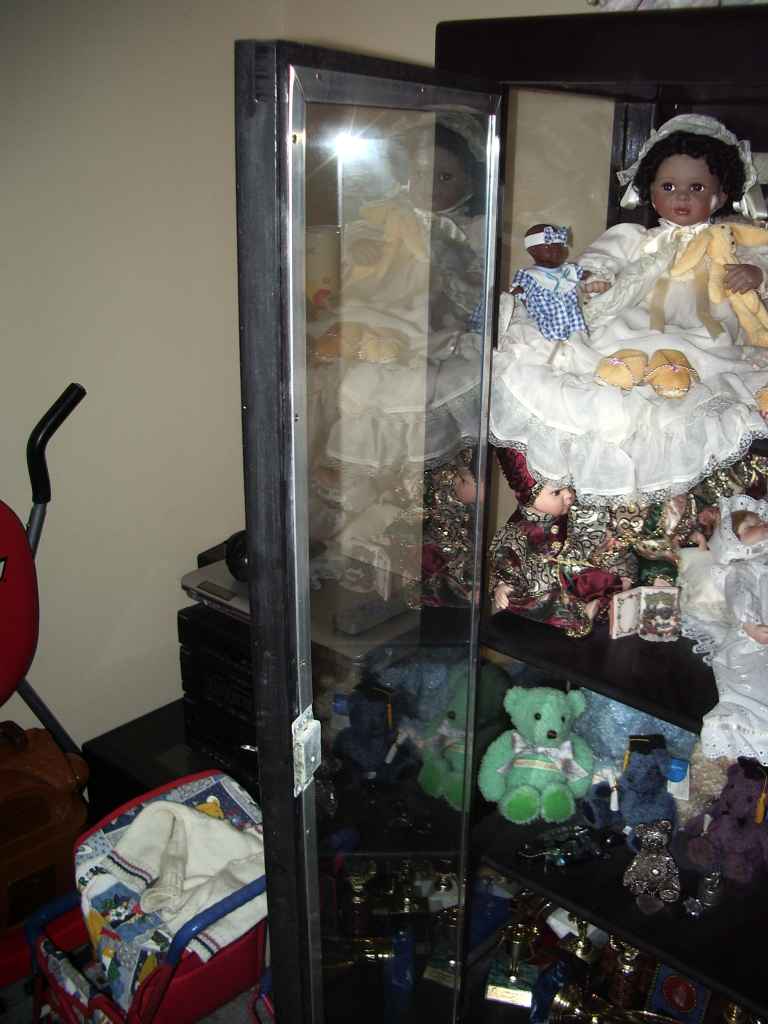 |
| Detail view of top LH corner. Note the not so well hidden join lines | The front foot . The foot gives it great stability | The glass is held in place by aluminium strip in its rebate |
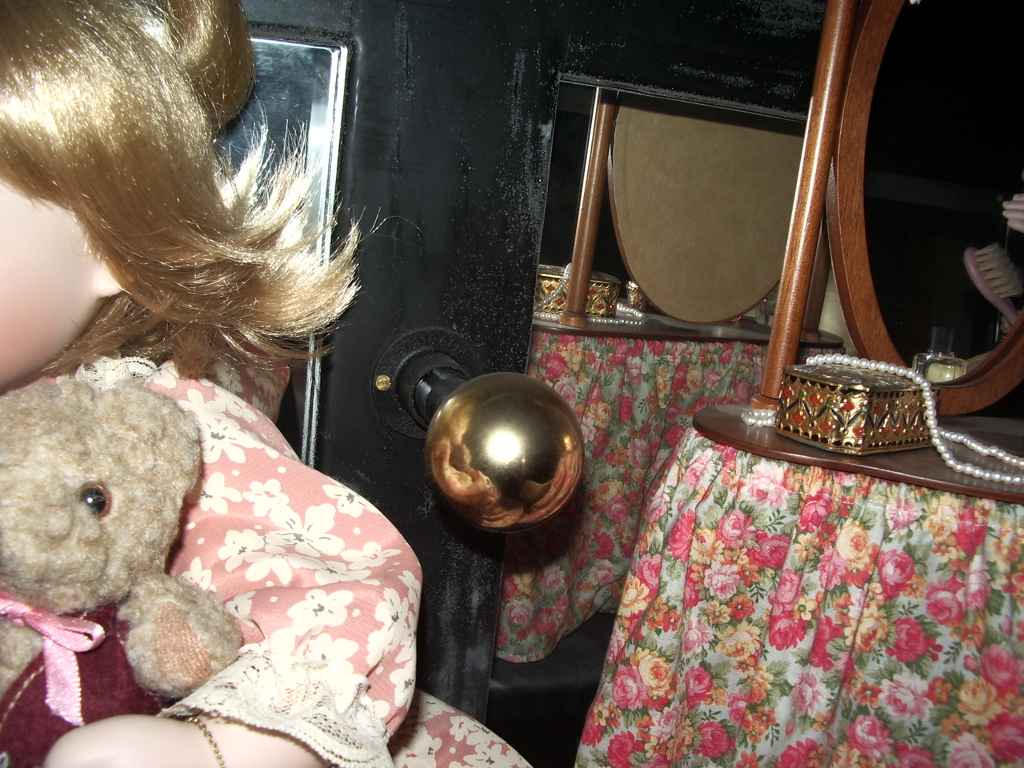 | 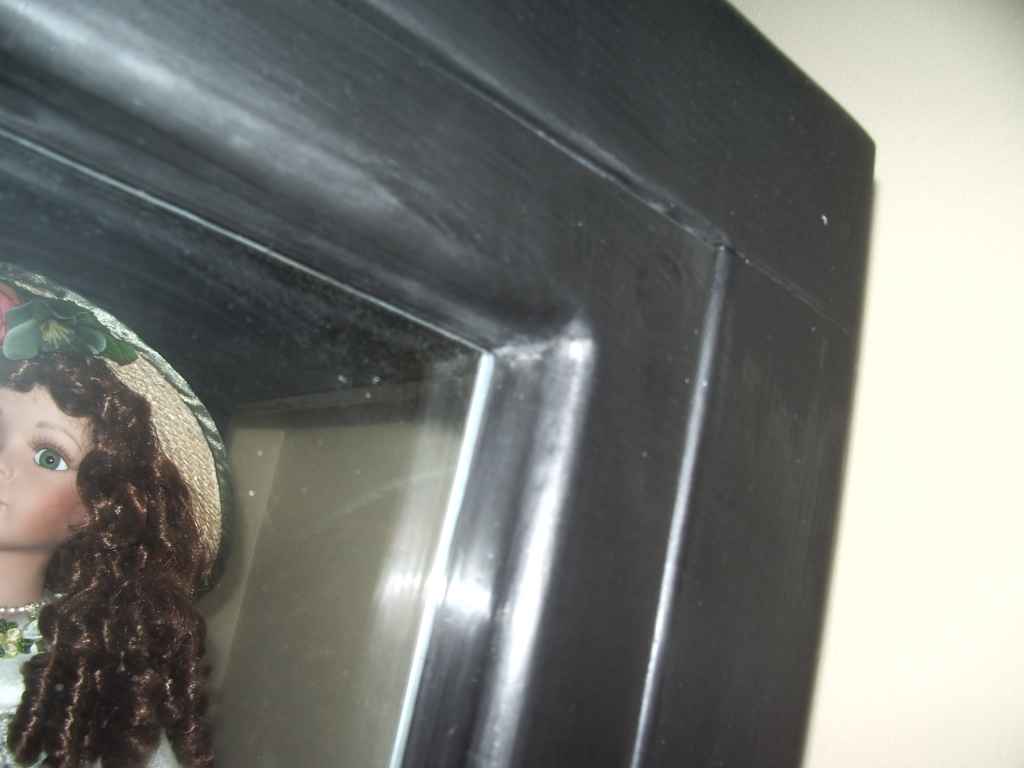 | 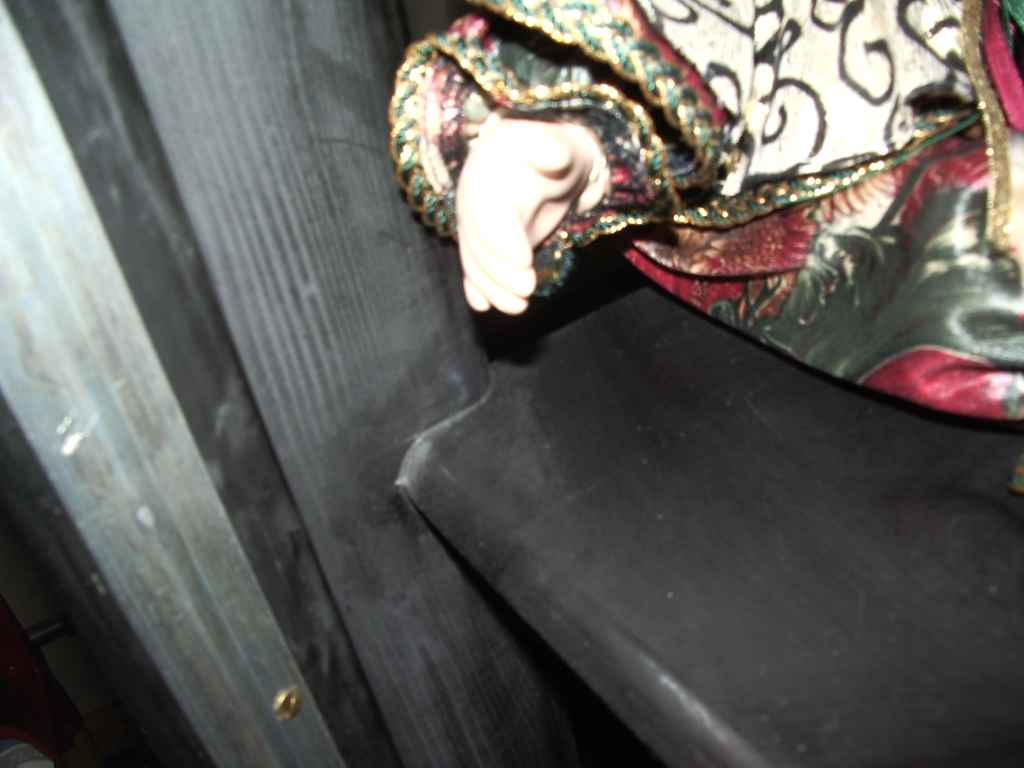 |
there are 8 of these back reflector bulbs
these bulbs are the same as actors make-up mirror bulbs. they are very effective in this application | Detail view of top RH corner. Note the join lines on the top beam
| shelves are morticed into the columns
made from dowelled pine boards |
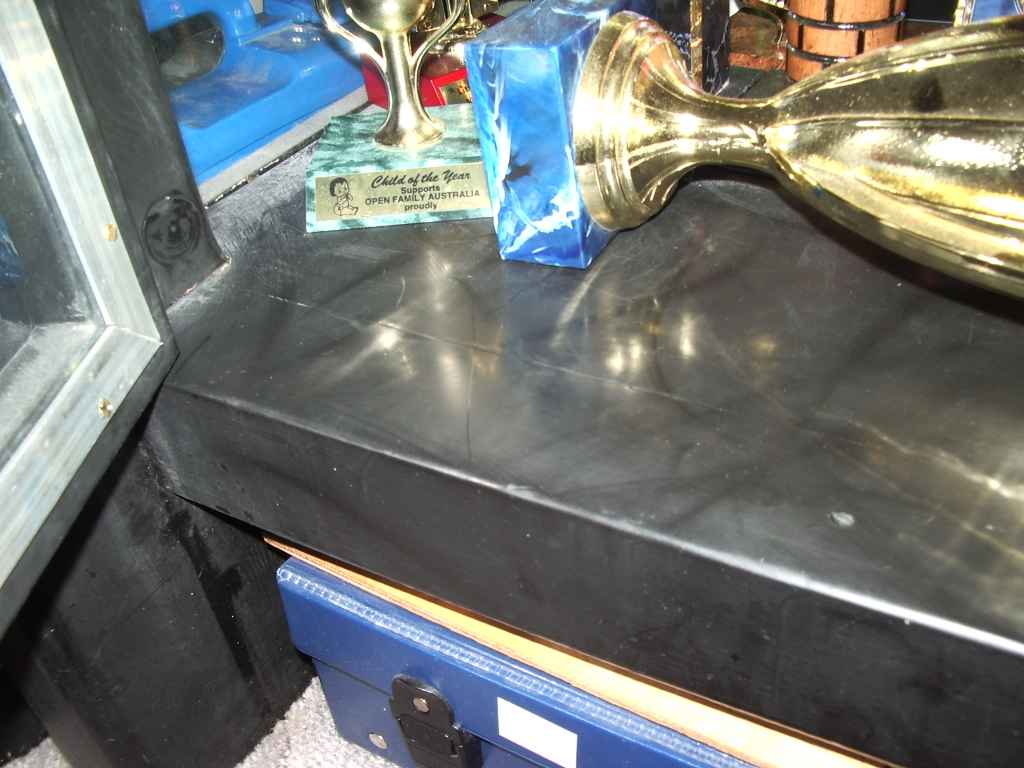 | 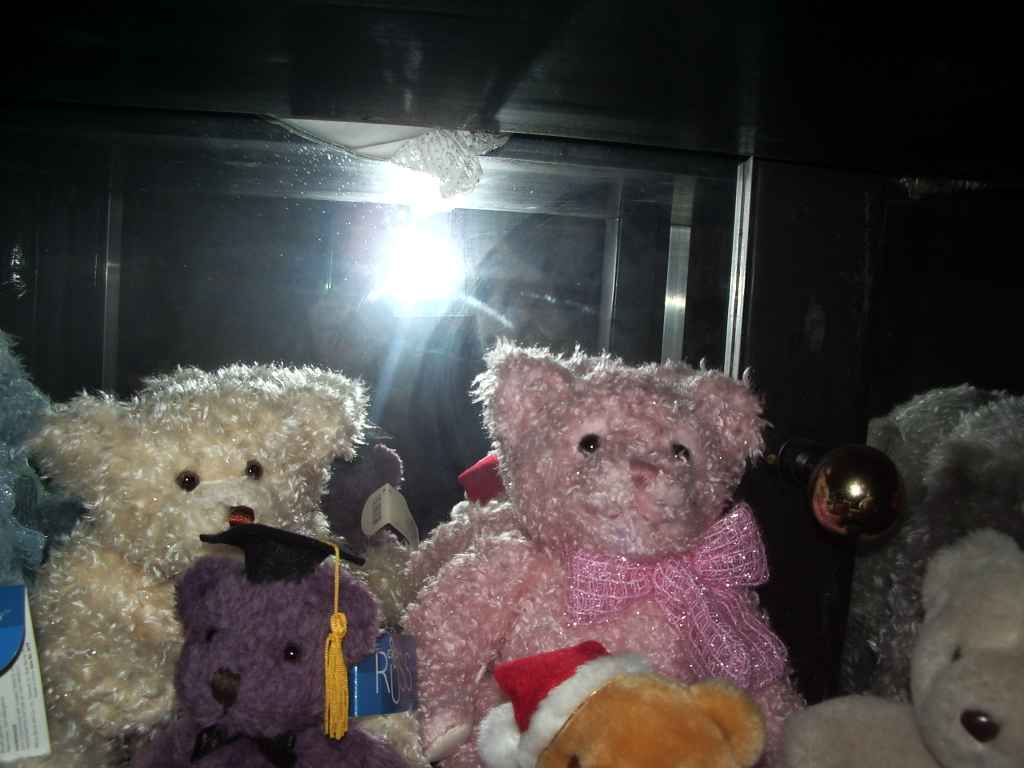 | 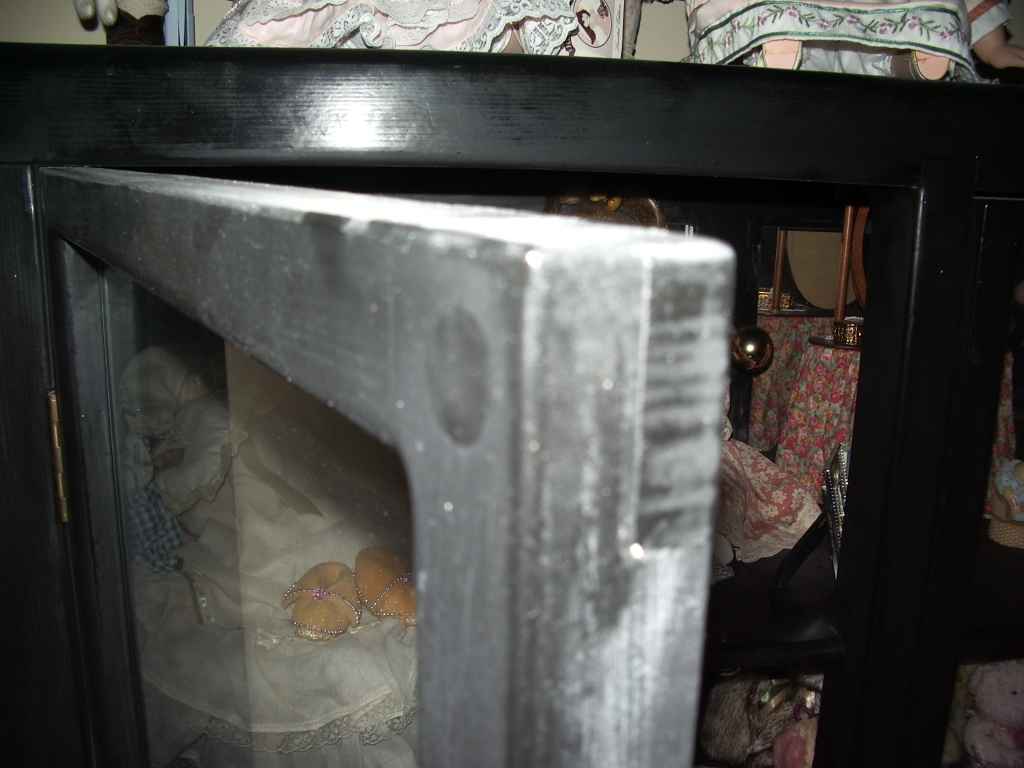 |
| The front foot . The foot gives it great stability | the back of the cabinet is lined with mirror. This doubles the effective visual volume of the display | just
visible is the hidden bolt securing the door frame Hidden bolt is
no longer a secret! This joint method is very strong. |
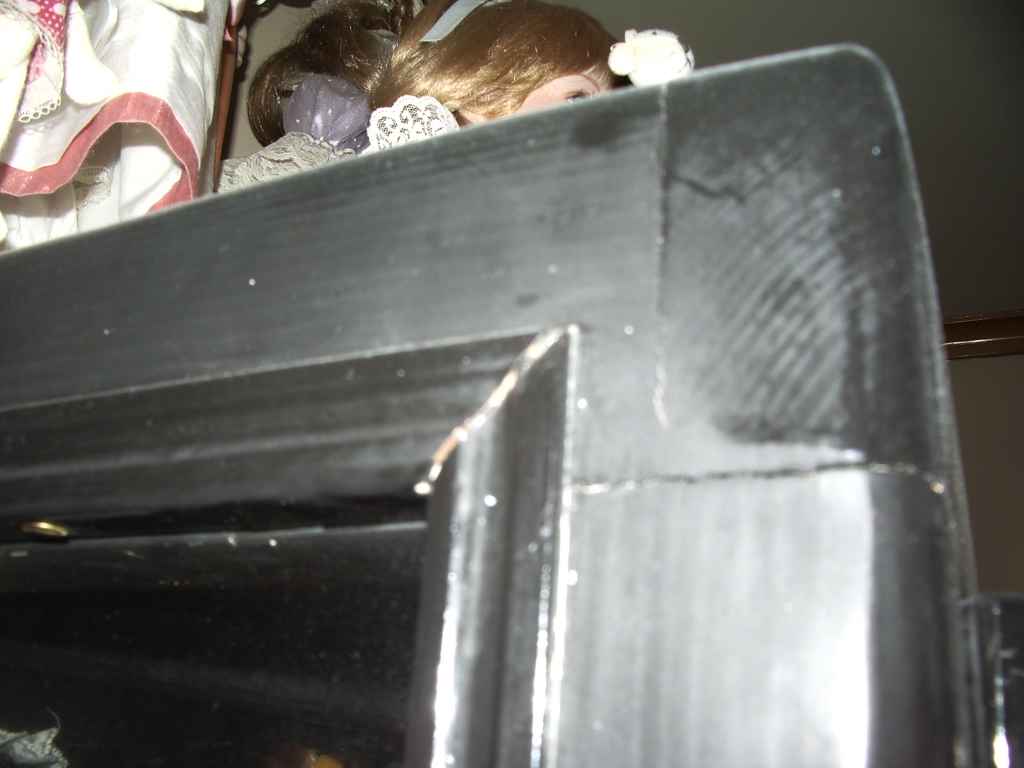 | 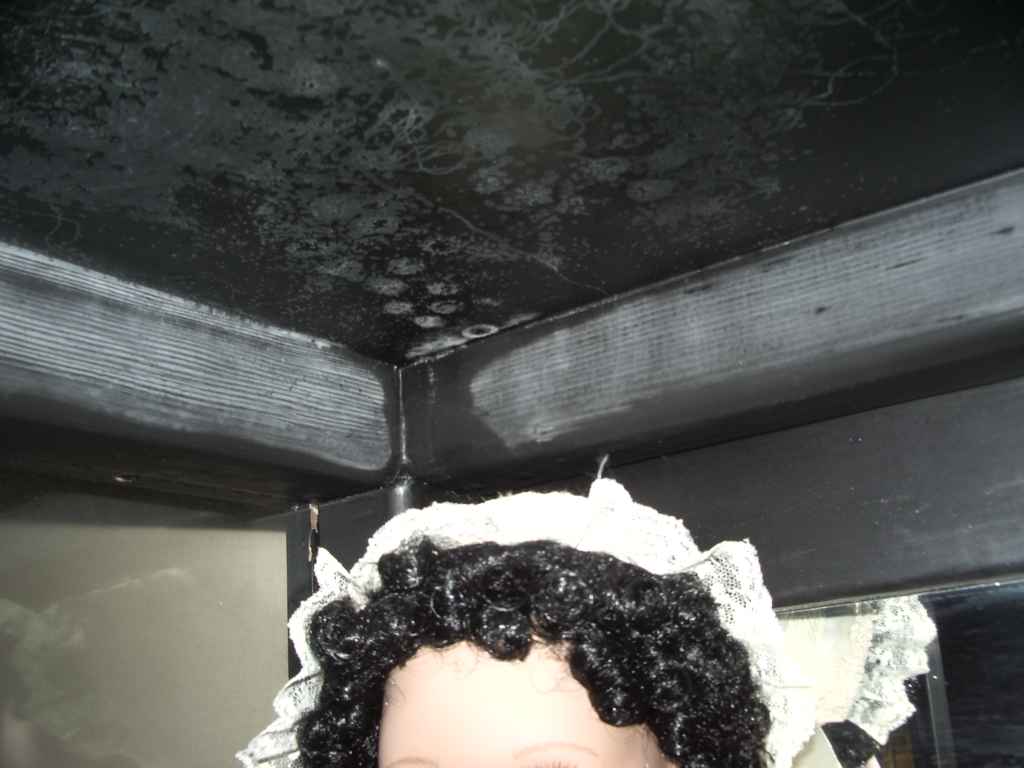 | 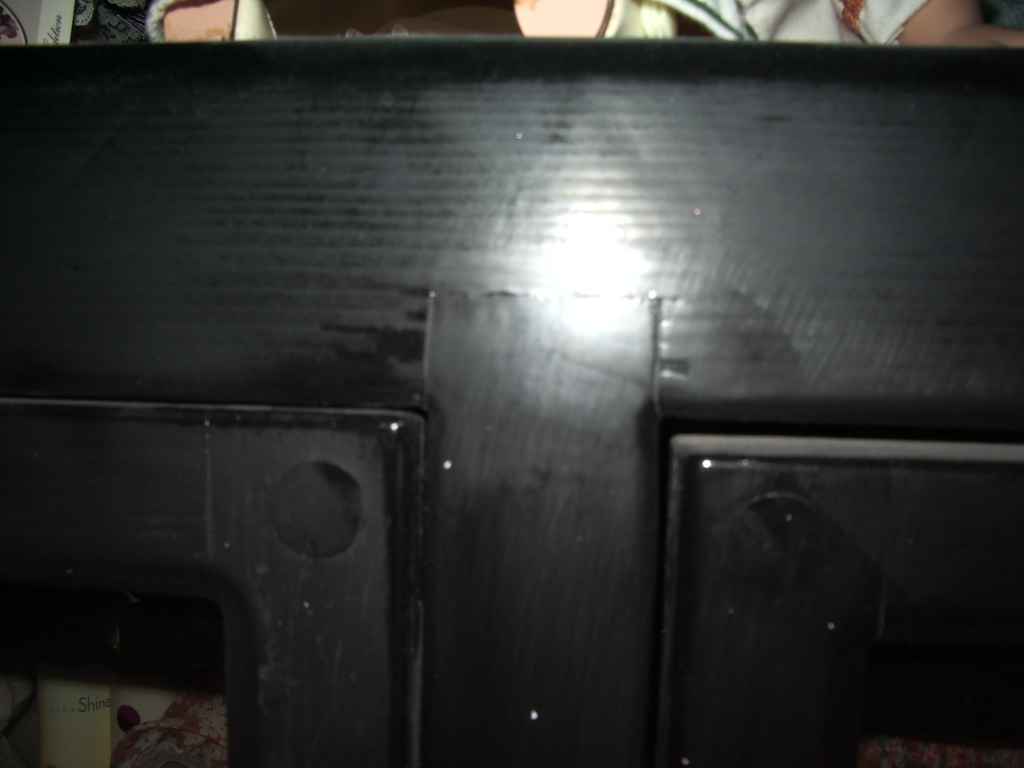 |
|
detail of top LHS corner. When made, the joint lines were not visible ,
but over 15 years as the wood slowly heaves the joint is outlined. Also
seen is the home made beading holding the side glass panels against
their rebate | Interior view of front corner. The white blemishes come from the plastic material contents on display | detail of door posts joining the main roof beam. This joint line should have been hidden with a better mortice joint |
I believe the white powder that has
grown on to the orginal gloss black has come from plastic objects that
have been displayed over the years.
homepage
mod record
Fri Nov 20 19:36:28 EST 2009
page formatting improved, extra text and images
